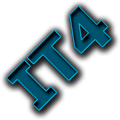Responsive Web Design (RWD): The Key to Successful Online Presence
Responsive Web Design, commonly known as RWD, is a fundamental element of modern web development. This approach to creating websites and web applications ensures optimal display and functionality on various devices, including computers, tablets, and smartphones. But what exactly is responsive web design, and why is it so important?
